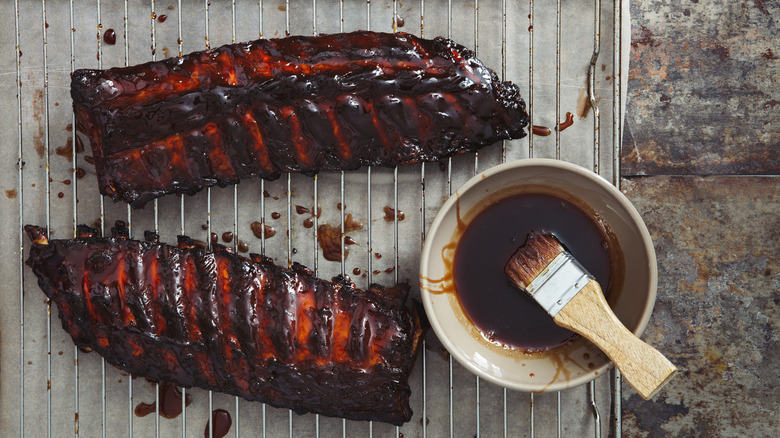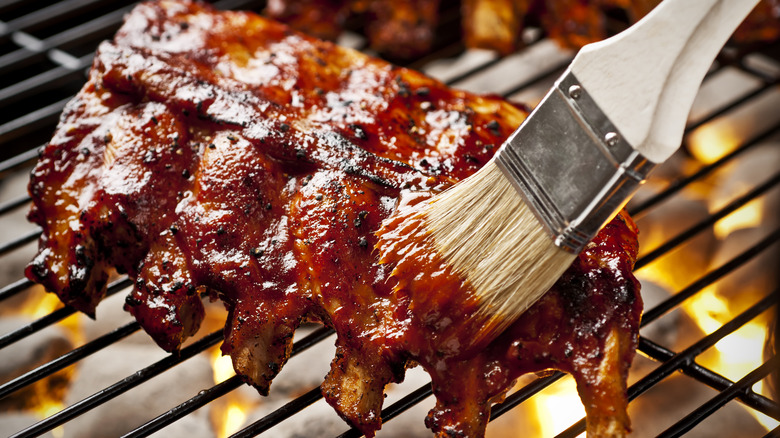The Best Way To Thicken BBQ Sauce For A Glaze
You know the scrumptious appeal of a glaze, aka a glossy, flavorsome coating over your barbecued protein of choice. It is visually impressive — never mind just tasty! But you'll need to learn how to thicken BBQ sauce to achieve this result. Tasting Table spoke to Greg Gatlin, the James Beard Award finalist for Best Chef and Founder of Gatlin's BBQ, to find out the best approach. His advice is simple: "Adding sugar and letting it reduce slowly is the best way to thicken it when being used as a glaze." Using a BBQ sauce as a base is an easy hack for a classic grill flavor, and sugar is the vital glaze ingredient to achieve that final caramelized flair. The sweet addition is the biggest differentiator between glaze and standard sauces, as it creates a thicker, stickier consistency.
Gatlin recently opened Gatlin's Fins & Feathers and is a total whiz at all things comfort food. Why not take a page out of his book and embrace some moreish dishes of your own? You could make pork belly burnt ends extra sweet and sticky with a proper glaze, or if your pork chops are begging for an extra sweet glaze, experiment with honey.
What's the best circumstance to use a glaze?
Reducing BBQ sauce into a tasty, thicker glaze takes as little as 15 minutes over medium heat. But when should you actually be glazing meat? As a rule of thumb, as close to the end of the cooking process as possible. The very sugar that sets a glaze aside from sauce makes it equally vulnerable to burning, and nobody wants a bitter-tasting coating over their carefully cooked meat. It's possible to drizzle it beforehand when dealing with a short cooking time and have a clock nearby. However, a safer approach is brushing the glaze on during cooking.
Similarly, what dishes suit this extra step, and which are better left with a punchy, runnier sauce? Glazed ham is obviously a classic, as are BBQ ribs. Generally speaking, chicken, pork, duck, and beef are the matches made in heaven. But don't rule out seafood either; glazed shrimp or salmon are mouthwateringly good.
Keep in mind that a glaze's purpose is to adhere to the meat; it's the subtle difference between a glaze and a reduction despite the similarities in the recipe process. The best circumstance to opt for this finishing technique is when you want a glossy effect and a semi-crunchy texture. It might be worth skipping if you'd prefer the protein within a sauce rather than just coated in a caramelized crust. Alternative sauce-based meals might include BBQ meatballs or braised short ribs — which require simmering in liquid to create a hearty dish with more tenderness.

